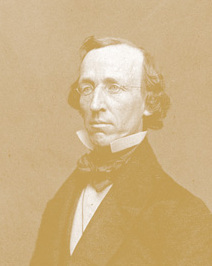 loading
loading
The missionary and the gorilla Harvard University ArchivesSavage collaborated with Harvard anatomist Jeffries Wyman in publishing the first scientific description of the gorilla. View full imageSavage never actually laid eyes on a living gorilla. He was waiting for his ship to head home, and there was no gorilla population in the immediate vicinity. But he was a good interviewer. Instead of the usual "marvellous accounts given by the natives . . . to credulous traders," local hunters gave him a remarkably accurate description of the gorilla's appearance and behavior. Among other things, he learned that a single adult male dominated each band of animals, and that the hair tended to go gray with age. "Their gait," Savage wrote, "is shuffling, the motion of the body, which is never upright as in man, but bent forward, is somewhat rolling, or from side to side." The gorilla "has the power of moving the scalp freely forward and back, and when enraged, is said to contract it strongly over the brow . . . so as to present an indescribably ferocious aspect." But he added: "The silly stories about their carrying off women from the native towns, and vanquishing the elephants . . . are unhesitatingly denied." Savage's pursuit of this information, and the feelers he put out for specimens, attracted the attention of other traders in Gabon, including Captain Wagstaff. When a local hunter eventually presented Savage with skulls, and an assortment of other bones, from two males and two females of the new species, a bidding war ensued. Wagstaff, commanding a brig called the John Cabot, was assembling a cargo consisting mainly of elephant tusks, ebony, and nuts. But sea captains also customarily eked out their wages with "private trade" in anything they calculated would sell back home, including natural curiosities. Writing to Wyman soon after his return to the United States, Savage complained: "I had three competitors for them, two sea captains & one missionary, who raised by their eagerness the expectations of the natives to a high pitch. Nor should I have succeeded in getting them at all, had it not been for" his host and fellow missionary, J. L. Wilson, "who exerted his influence with the chief & master of the slave who killed the animals. Others stood ready to pay almost any sum for them, & I believe they constitute the only set that has ever been taken out of the Gaboon." The bones had cost him $25, a substantial sum (which no doubt helped in the master's decision to release the hunter from slavery). But for Savage, it was also "more than I am able to lose." Though he wanted to donate the bones to the cabinet of the Boston Society of Natural History, and was "sorry to be under the necessity of requiring anything for them," he was obliged to offer them to anyone who could reimburse his costs. Wyman, who had just obtained the faculty position at Harvard for which he had been patiently waiting, put payment in the mail by the next post. Savage had hoped the species would become commonly known by its Gabon name, anglicized as enge-ena. But he left the choice of the scientific name to Wyman, who noted that the ancient Carthaginian explorer Hanno had used the word "gorilla" for "wild men" living on the coast of West Africa. Thus the gorilla ended up with an African name in any case, gorel being a word used by the Fulani of West Africa for "little men," or Pygmies. In their letters back and forth, Wyman suggested that Savage write to the Annals & Magazine of Natural History in London to establish priority for his discovery. "I will do so, but I do not view it of any consequence," Savage replied, a little naively. "Should any one be fortunate enough to have discovered it & fore-stal me, I must say that I shall have no regrets, inasmuch as it will be secured to science."
|
|